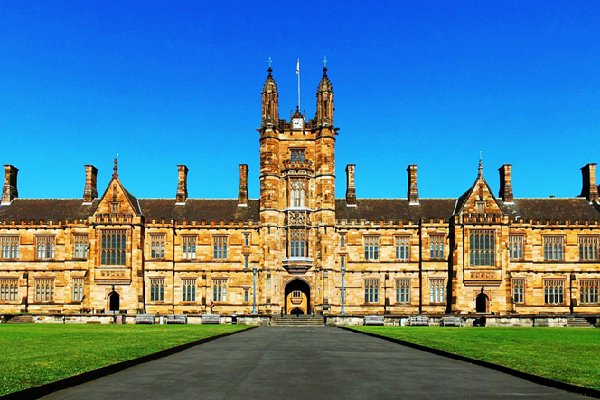University of Sydney team wins AUSMURI funding
Our growing knowledge of the biological world at the tiny scale is opening a new universe for scientists to explore the creation of completely new, responsive materials, with applications in diverse fields from drug delivery to materials science. Using ‘DNA origami’ or nanoparticle self-assembly, scientists are working to establish new classes of materials that can operate as complex devices, delivering solutions in materials science.
University of Sydney researchers are at the global frontline of this development.
A trio of Sydney scientists is joining with other Australian and US researchers in a program led by Columbia University to invent and deliver responsive materials, exploring this new and rapidly developing area of fundamental science.
Professor Marcela Bilek, Dr Anna Waterhouse and Dr Shelley Wickham will share in up to $3 million funding from AUSMURI, a joint program of the US Department of Defense and Australia’s Department of Defence. The funding will support fundamental multidisciplinary science in the public domain. Total funding for the project is up to $US8.5 million ($12.6 million).
Project lead, Professor Oleg Gang from Columbia University, said: “This project is an incredibly collaborative effort with partners from the US and Australia who have broad expertise in experimental and computational materials science and nanotechnology. We’re confident that bringing together traditionally separated fields and unexplored ideas will result in some truly transformative concepts.”
One of the aims of the project is to see how manufactured nanomaterials can mimic the responsiveness of biological systems to external stimulus, such as light. This will involve developing switchable nanomaterials that can include optical and magnetic functionality.
Nanotechnology operates at the scale of nanometres – a billionth of a metre.
Dr Shelley Wickham, from the School of Chemistry and University of Sydney Nano Institute, works with DNA molecules and how they can be manipulated to act as carriers of nanomaterials. This approach is sometimes referred to as ‘DNA origami’.
Dr Shelley Wickham, Sydney Nano and School of Physics.
Dr Shelley Wickham, Sydney Nano and School of Physics.
She said: “One of the most exciting parts of this project is the team, we have people from so many different disciplines – material science, nanotechnology, chemistry, physics, medical science and engineering.
“Bringing these people together will build a unique environment for advances in nanomaterials and create a great learning experience for students and early-career researchers on the team.”
Dr Anna Waterhouse.
Dr Anna Waterhouse, School of Medical Sciences.
Dr Anna Waterhouse, from the School of Medical Sciences in the Faculty of Medicine and Health, Sydney Nano and the University’s Charles Perkins Centre, said: “Inspired by biology, we aim to build new material systems that can be adjusted with nanoscale precision to achieve responsive optical and magnetic functions.
“These applications could have incredibly useful roles to play in medical devices and drug delivery.”
Professor Marcela Bilek from the School of Biomedical Engineering, the School of Physics, Sydney Nano and the Charles Perkins Centre, said: “I am excited about the vision of this project to create new-generation responsive materials by combining adaptable, self-assembling biological structures with inorganic nanomaterials.”
Her laboratory focuses on the capacity for non-biological surfaces to act as biological scaffolds at the nanoscale.
“Our AUSMURI team draws on world-leading expertise in three University of Sydney faculties (Engineering, Science and the Faculty of Medicine and Health) and will provide stimulating learning opportunities for staff and students alike,” she said.
Professor Marcela Bilek, Biomedical Engineering and Physics.
Professor Marcela Bilek, Biomedical Engineering and Physics.
The grant includes funding for higher degree students and research staff to conduct extended laboratory research in the United States.
“This will allow great experience at top-class global institutions for researchers starting out in their careers and bring back home a lot of this knowledge and expertise,” Dr Wickham said.
The AUSMURI team links five Australian and five US experts with complementary expertise in multidisciplinary material science. As well as the University of Sydney, which is the Australian-lead institute and Columbia in New York, the project involves academics from Johns Hopkins University, University of Michigan, University of Wisconsin-Madison in the US. It also involves Professor Amanda Ellis, Head of the School of Chemical and Biomedical Engineering at the University of Melbourne and Professor of Surface Engineering Peter Kingshott from the Department of Chemistry and Biotechnology at Swinburne University of Technology in Australia.

